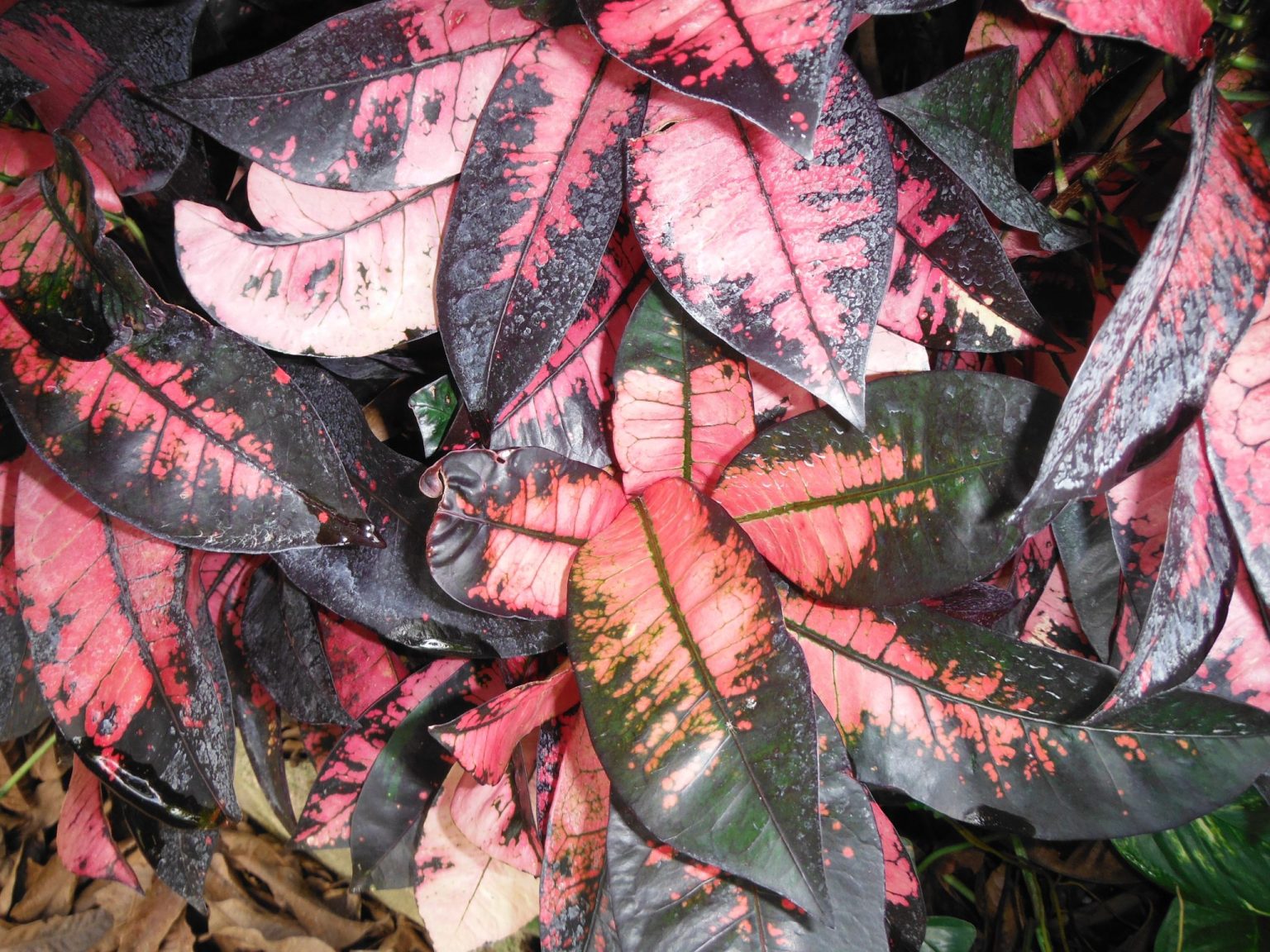Mrs iceton croton plant – The Mrs. Iceton croton plant, renowned for its captivating foliage, embarks us on a botanical journey where nature’s artistry unfolds. With its vibrant hues and distinct leaf patterns, this plant adds a touch of the tropics to any indoor or outdoor space.
Unveiling the secrets of its care, propagation, and decorative uses, this guide invites you to discover the enchanting world of the Mrs. Iceton croton plant, a horticultural masterpiece that brings life and color to your surroundings.
Mrs. Iceton Croton Plant Description: Mrs Iceton Croton Plant

The Mrs. Iceton croton plant (Codiaeum variegatum ‘Mrs. Iceton’) is a stunning ornamental shrub known for its vibrant and intricate foliage. It is a member of the Euphorbiaceae family and is native to the tropical regions of Southeast Asia and the Pacific Islands.
The plant typically grows to a height of 2-4 feet (0.6-1.2 meters) and has a bushy, upright growth habit. Its leaves are the most distinctive feature, with an oval or elongated shape and a leathery texture. The leaves are arranged alternately on the stems and can range in size from 3 to 8 inches (7.6 to 20.3 centimeters) in length.
Unique Features
The Mrs. Iceton croton plant is renowned for its exceptional foliage, which exhibits a remarkable range of colors and patterns. The leaves are primarily characterized by their vibrant hues, which include shades of green, yellow, orange, red, and purple. The leaf margins are often adorned with intricate markings, such as serrated edges, scalloped borders, or wavy lines.
One of the unique features that distinguishes the Mrs. Iceton croton plant from other croton varieties is its variegated foliage. The leaves are typically splashed with multiple colors, creating a striking and eye-catching effect. The variegation patterns can vary widely, ranging from simple stripes or blotches to intricate swirls and marbling.
Growing Habits and Environmental Preferences
The Mrs. Iceton croton plant is relatively easy to care for and can thrive in a variety of indoor and outdoor environments. It prefers bright, indirect light but can also tolerate partial shade. The plant requires well-drained soil that is kept consistently moist but not waterlogged.
The Mrs. Iceton croton plant is not cold-hardy and should be protected from temperatures below 50°F (10°C). It is best suited for tropical and subtropical climates or can be grown as a houseplant in cooler regions.
Mrs. Iceton Croton Plant Care

Providing optimal care for the Mrs. Iceton croton plant is essential for maintaining its vibrant foliage and overall health. This includes meeting specific requirements for lighting, watering, soil, and fertilization.
Lighting, Mrs iceton croton plant
The Mrs. Iceton croton plant thrives in bright, indirect light. Direct sunlight can scorch its leaves, causing them to lose their vibrant colors. However, it can tolerate low-light conditions, but its growth may be stunted and its leaves may become less colorful.
Watering
Water the Mrs. Iceton croton plant when the top inch of soil feels dry to the touch. Avoid overwatering, as this can lead to root rot. During the growing season, water the plant more frequently, about once a week. Reduce watering during the winter months.
Soil
The Mrs. Iceton croton plant prefers well-drained soil that is rich in organic matter. A potting mix specifically designed for crotons is ideal. You can also create your own potting mix by combining equal parts peat moss, perlite, and vermiculite.
Fertilization
Fertilize the Mrs. Iceton croton plant every two weeks during the growing season with a balanced liquid fertilizer. Reduce fertilization to once a month during the winter months.
Propagation
The Mrs. Iceton croton plant can be propagated through cuttings. Take a cutting from a healthy stem and remove the leaves from the bottom inch. Dip the cut end in rooting hormone and plant it in a pot filled with moist potting mix. Keep the cutting warm and humid until it roots.
Common Pests and Diseases
The Mrs. Iceton croton plant is susceptible to a few common pests and diseases. These include:
- Spider mites: These tiny pests can cause the leaves to turn yellow and drop off.
- Mealybugs: These white, cottony insects can suck the sap from the plant, causing it to weaken and die.
- Root rot: This fungal disease can cause the roots to rot, leading to the plant’s death.
To prevent these problems, keep the plant clean and free of debris. Inspect the plant regularly for pests and diseases, and treat them promptly.
Mrs. Iceton Croton Plant Uses

The Mrs. Iceton croton plant is highly prized for its vibrant and diverse foliage, making it a versatile decorative element in both indoor and outdoor settings. Its variegated leaves can add a splash of color and visual interest to any space, complementing various design styles and color schemes.
When used indoors, the Mrs. Iceton croton plant can brighten up living rooms, hallways, and offices. Its compact size makes it suitable for placement on tables, shelves, or as a centerpiece. The plant’s colorful leaves can complement neutral-toned interiors, adding a touch of vibrancy without overwhelming the space. In outdoor settings, the Mrs. Iceton croton plant can be incorporated into container gardens, mixed borders, or as a standalone specimen. Its bold foliage can create a focal point or add contrast to other plants.
Potential Benefits
Beyond its decorative value, the Mrs. Iceton croton plant is also believed to offer certain benefits. Some studies have suggested that it may have air-purifying properties, removing toxins from the air. Additionally, traditional medicine has attributed various medicinal uses to the plant, including its potential to treat skin conditions and alleviate pain.